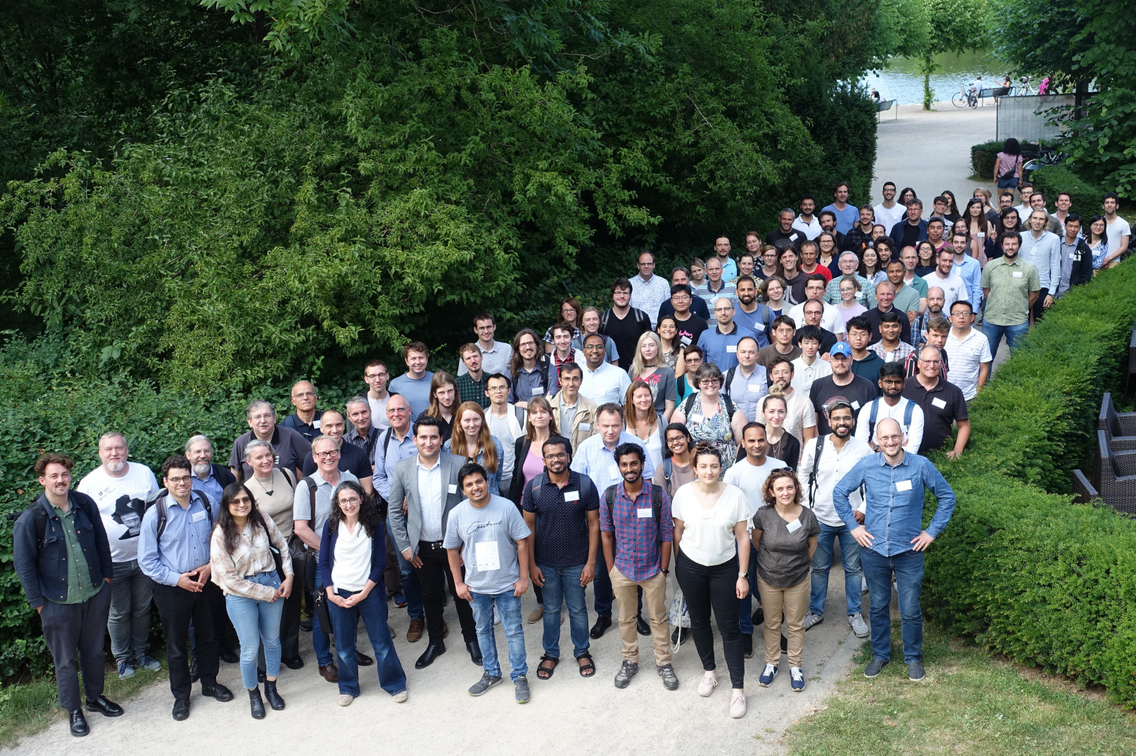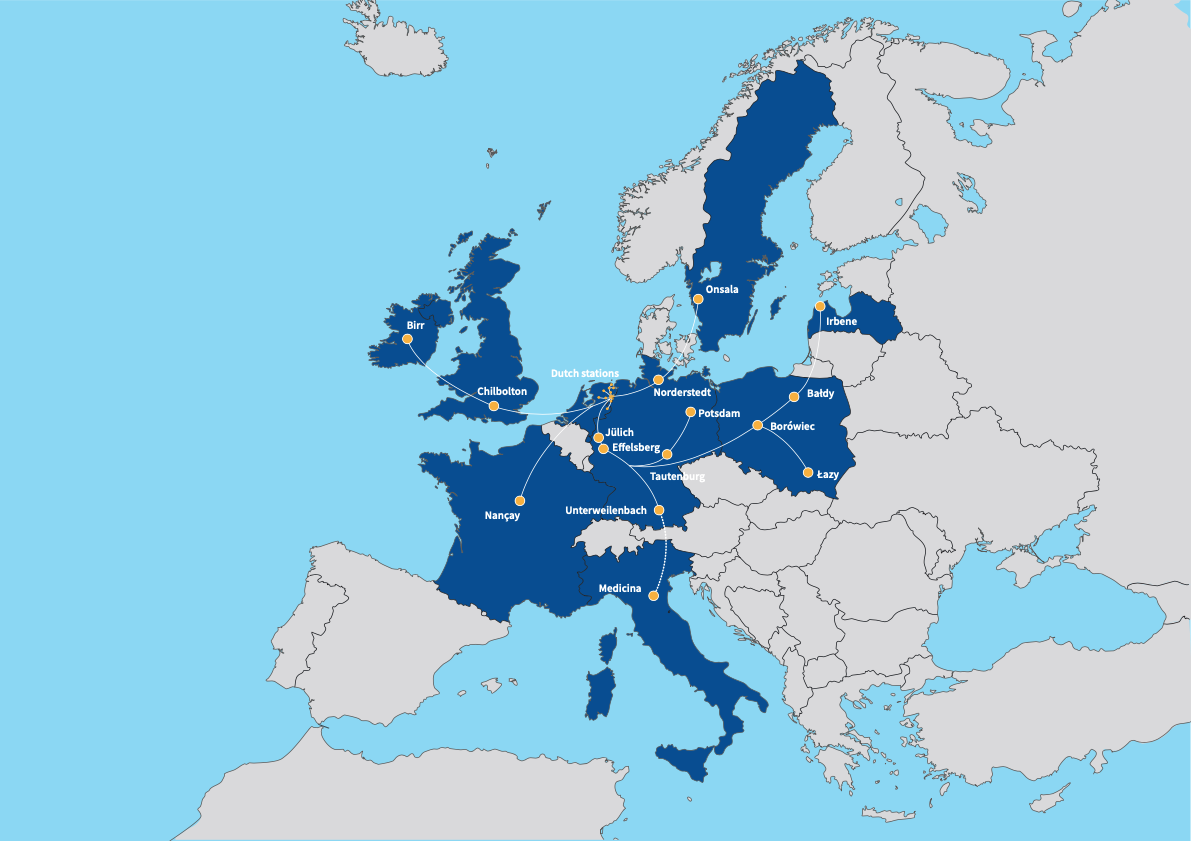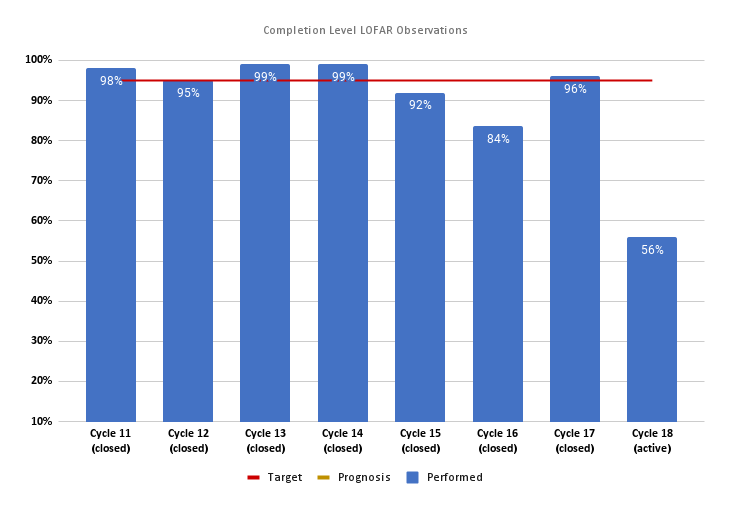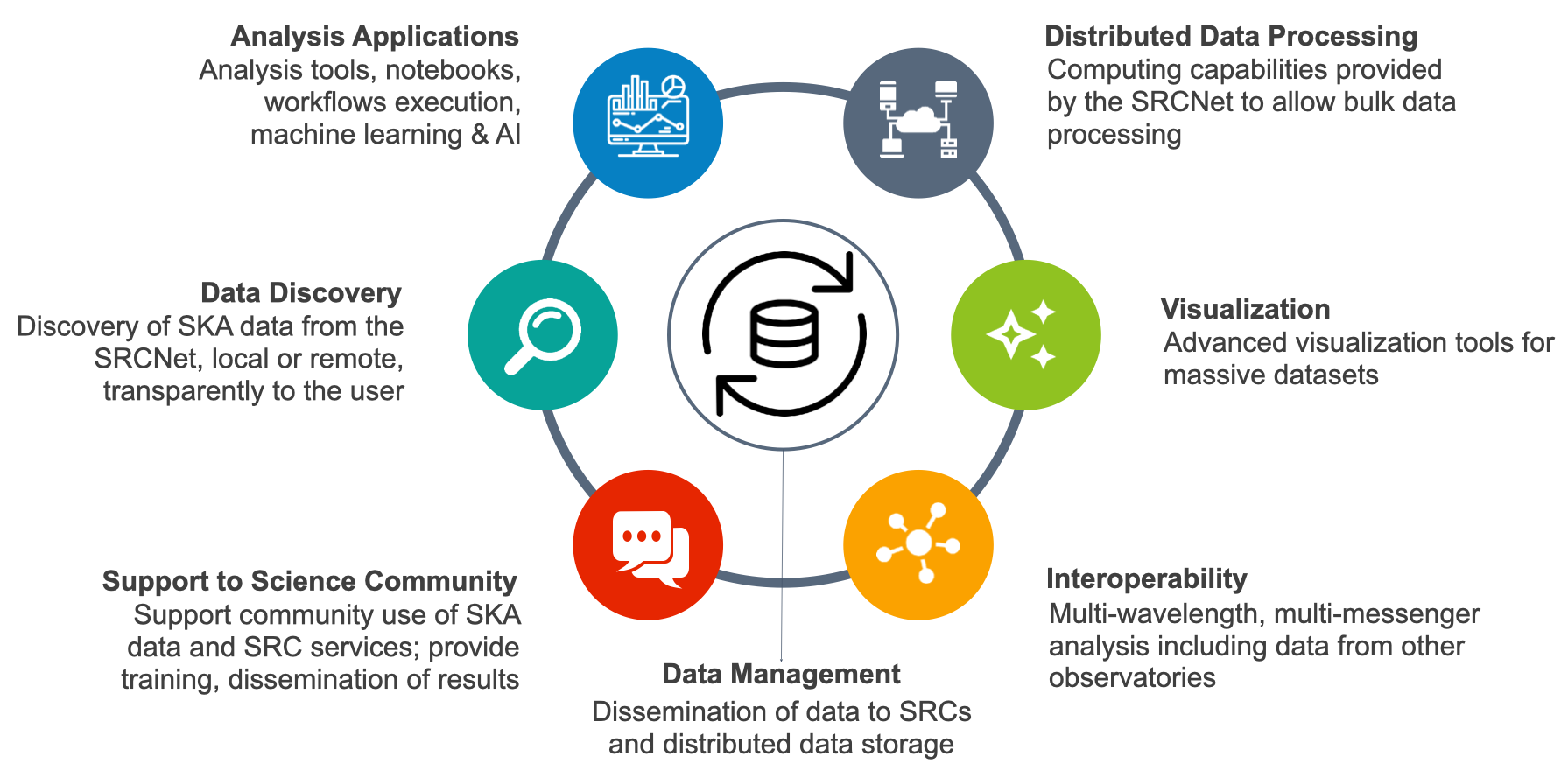Announcements
Cycle 18 observing program
13 out of the submitted 28 proposals were accepted for observations during Cycle 18. These, together with the existing long-term Cycle 16 projects are being observed in the ongoing Cycle 18 observing campaign spanning June 1 – November 30, 2022. Over 2543 observing hours and 2214 TB of storage have been allocated. More details about the progress of the Cycle 18 observing program are given in a dedicated section below.
No Cycle 19 proposal call
It was decided that there will be no formal call for Cycle 19 proposals. Observing of the current Long Term project portfolio will be continued in Cycle 19, 1 Dec 2022 – 31 May 2023. All Priority A allocations already made will be honoured; the time designated as look-ahead will then be taken up in Priority B (i.e., on a best-efforts basis, subject to scheduling and logistical constraints, but there is likely to be a significant amount of Priority B observing possible). This will ensure strong scientific productivity will be maintained. The Director’s Discretionary Time (DDT) mechanism will operate in Cycle 19 as usual (with an enhanced amount of available time): it will provide a continuous entry point for some smaller projects, from any proposer(s), who will need to demonstrate both scientific merit and urgency, to be scheduled on a best-efforts basis. Cycle 18 will be completed on 31 Nov 2022; all Cycle 18 allocations are scheduled at their normal priority. In Cycle 19, the Cycle 18 Priority A observations that have failed will be taken along at priority B as usual. A Cycle 20 proposal call is expected with the usual timing (i.e., early February 2022), and will be open to proposals from the full community; the details of this call will be decided by the ILT Board in due course.
Instability of the Poznan and Juelich LTA sites
Data staging and download from the Poznan and Juelich LTA sites have been unstable in the past few weeks. Actions are undertaken to resolve this as soon as possible. As usual, contact the SDC-Helpdesk if you experience any issues.
LOFAR password self-service
The password Self-service is active again although the integration with (linking from) MoM/NorthStar/LTA is not yet functional. In the meantime, users can visit https://webportal.astron.nl/pwm to reset their password. Contact the SDC-Helpdesk, if further support is needed.
LOFAR Family Meeting 2022
The 2022 edition of the LOFAR Family Meeting took place in Cologne between June 13-17. The program featured a broad range of recent LOFAR science results, as well as extra sessions for the LOFAR Users Meeting and LOFAR2. In total, 141 LOFAR enthusiasts participated to the event. The talks given at the workshop will be made available soon. The workshop picture is presented below.
Array and observing system status
- Currently, there are 38 stations operational in the Netherlands: 24 core and 14 remote stations. 14 international stations in operations: DE601, DE602, DE603, DE604, DE605, FR606, SE607, UK608, DE609, PL610, PL611, PL612, IE613, LV614.
- A new international station will be built in Italy. Station deployment is planned to start in 2022. The station is expected to be fully operational in 2024.
- Antenna elements of all stations are performing nominally, except RS210 in LBA that has about 18% non-operational elements. There is a planned maintenance to address the issue on September 13. The overview of non-operational antenna elements for LBA and HBA is available here.
- No major failures occurred on CEP hardware/software over the past few months. A major upgrade of the processing cluster is planned to happen later next year.
Observing programs
- Cycle 18 observations started on 1 June and will run till 30 November 2022. The observing schedule can be found here.
- No major failures occurred on CEP hardware/software over the past few months. A major upgrade of the processing cluster is planned to happen later next year.
Projects
Telescope Manager Specification System (TMSS) - S. ter Veen
- The Telescope Manager Specification System (TMSS) is a replacement for MoM and various schedulers to specify and schedule the LOFAR observations.
- TMSS is live! The first projects of LOFAR observations are now managed by TMSS. The LOFAR LBA Survey has used TMSS since April 25th. Overall, operations have been quite successful for a new system, thanks to extensive testing and bug fixes beforehand. Some remaining issues had to be resolved or required some additional workarounds for the time being. This is all expected.
- Commissioning is ongoing to accept other observing strategies. Due to other obligations, this could not all be performed before the start of Cycle 18. Currently, 6 projects use TMSS, but it is expected that soon all projects will run with TMSS.
- Users will be instructed on how to use TMSS when their project is moved over to the new system.
- Development is funded till the end of October. Development is focused on:
- Fixing issues in running production observations and reducing the response time of using TMSS.
- Supporting the scheduling set editor for efficient support.
- Being able to run operations without the need of MoM.
- Finish development of a basic form of dynamic scheduling.
- Finish project, cycle, and failure reporting.
- Move reporting of daily observations from JIRA to TMSS.
- Partial COBALT2 support.
- As the complexity is high and resources are still limited, this may not all be completed by October.
LOFAR2.0 program – W. van Cappellen
LOFAR2.0 progress highlights are presented every two months in the LOFAR2.0 Newsletter, see: https://www.astron.nl/lofar2-0-newsletter/.
- On May 10, the LOFAR2.0 Dwingeloo Test Station (DTS) was opened with a glorious event for all ASTRON personnel. A local TV station provided a nice YouTube video (partly in Dutch) explaining the importance of LOFAR2.0: https://www.youtube.com/watch?v=448R6nwwhBk
- The Station development continued with the next phase of the project: rigorous testing of the current designs and improving these even more. So far, the test station has demonstrated to work very well, even during the hot summer days!
- The LOFAR2.0 Station hardware design is ready and is being tendered. We aim to sign production contracts by the end of October, after which LOFAR2.0 series production will commence.
- The DANTE project kicked-off. The DANTE development project aims to design a new HBA-FE board that is capable of single-beam operation (when combined with the old summators) and dual-beam operation (when combined with the new beamformer unit). The project also aims to develop a dual-beam beamformer unit, enabling dual-beam operation when combined with the new HBA-FE boards.
SDC program – J. Swinbank
- The major focus of effort within the SDC Programme over the last several months has been putting together the processing framework that will be used for the LOFAR Data Valorization (LDV) project. This system will be used by operators to organize, run, and monitor all of the various pipeline executions in this tremendously complex project, and to help keep track of the data resultant data products. Perhaps even more importantly, though, this system is being designed with an eye to the future after (and during!) LDV; we will extend and improve this framework to be the standard way we can organize bulk processing across the Science Data Centre. What's more, all this is wrapped up behind a modern and easy to use web interface — as shown in the accompanying figure.
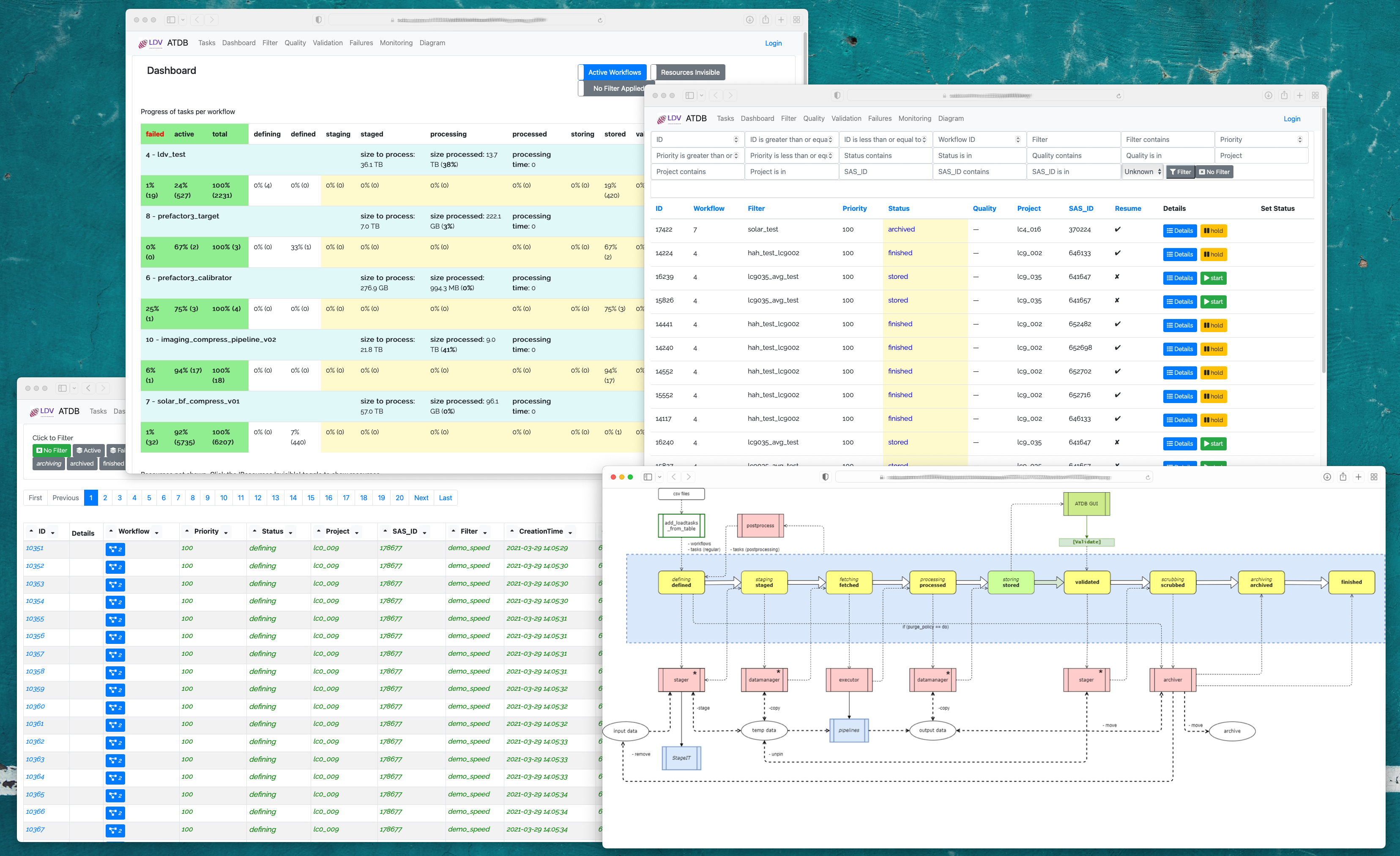
- The Prefactor pipeline, which provides direction-independent calibration and imaging, has been renamed to LINC — standing for LOFAR Initial Calibration, which we regard as a more straightforward and accessible name. LINC is actively developed; not only can you download and use it on your own system, but it can also — through a “pilot programme” — be automatically applied to data taken for eligible proposals during LOFAR's regular observing cycle. For more information on LINC, refer to the code repository at https://git.astron.nl/RD/LINC and take a look at the documentation at https://linc.readthedocs.io.
- After a long period of discussion, followed by requirements gathering and planning, the prototyping effort for the development of the global network of SKA Regional Centres (SRCs) started in June of this year. The SRC network will be responsible for archiving SKA data, making it available to the scientific community, and providing tools and capabilities to help turn it into the best and highest-impact science. More details about the planned SRC capabilities are shown in the accompanying figure (with thanks to Jesús Salgado, SKAO). The Netherlands — represented by ASTRON and SURF — are well represented throughout the prototyping effort, and in particular in the development of “science platform” capabilities. We are looking forward to making use of this work not just for the SKA, but also to deliver a compelling new set of analysis services for LOFAR data over the next several years. Watch this space!
LOFAR Data Valorization – C. Baldovin (on behalf of the LDV project team)
- The processing of LOFAR data in the LTA will provide added value to the data collection currently present as uncalibrated (L0 or L1) data products, enhancing the science value of the LOFAR archive and at the same time reducing the occupancy of the LTA. Progress on LDV is reported in different areas.
- The last couple of months have been dedicated to the preparation and planning for the development cycle spanning the summer months, at the same time the development of prioritized features proceeds. Commissioning and developments of the compression workflow for the interferometric and beamformed data, respectively - with the goal of starting the data compression operational phase in September 2022 - is ongoing.
- Team Rainbow (SDC) is responsible for the development of the features needed to allow successful implementation of the LDV workflows. The work focuses, among other things, on the implementation of a new web application (LDV-specification) that will replace the current scripts.
- The compression workflow in place at SurfSARA is under commissioning; during this period multiple tests are executed on a small sample of projects to identify issues and potential improvements. One of the critical aspects refers to the metrics of the data after processing, which will provide a quality assessment of the science data products in the LTA.
- Finally, the LDV team got together at ASTRON for a “Busy Day” in July. During this event several issues relevant for successful operations were discussed, such as the data validation procedure and troubleshooting of pipelines, a demo of the LDV workflow was also done. The team also took the time to reflect on the progress made so far, the challenges and successes and how to improve our way of working as a team. The team is very satisfied with the progress made during this day, and we look forward to repeating this get together.
Calendar of upcoming LOFAR activities
ERIS 2022 – M. Iacobelli (on behalf of the LOC)
Preparations for the upcoming 9th European Radio Interferometry School (ERIS 2022) are progressing well and 72 participants are currently expected to join the event in Dwingeloo in September.
The school program is now finalised and consists of 16 lectures, 14 tutorials and social activities, including a guided tour to the WSRT site.
COVID-related extra precautions are being considered for a safest and pleasant event.
